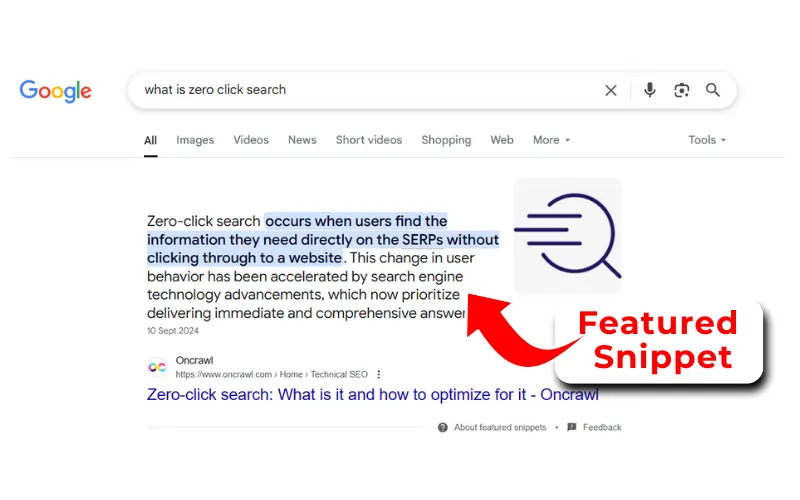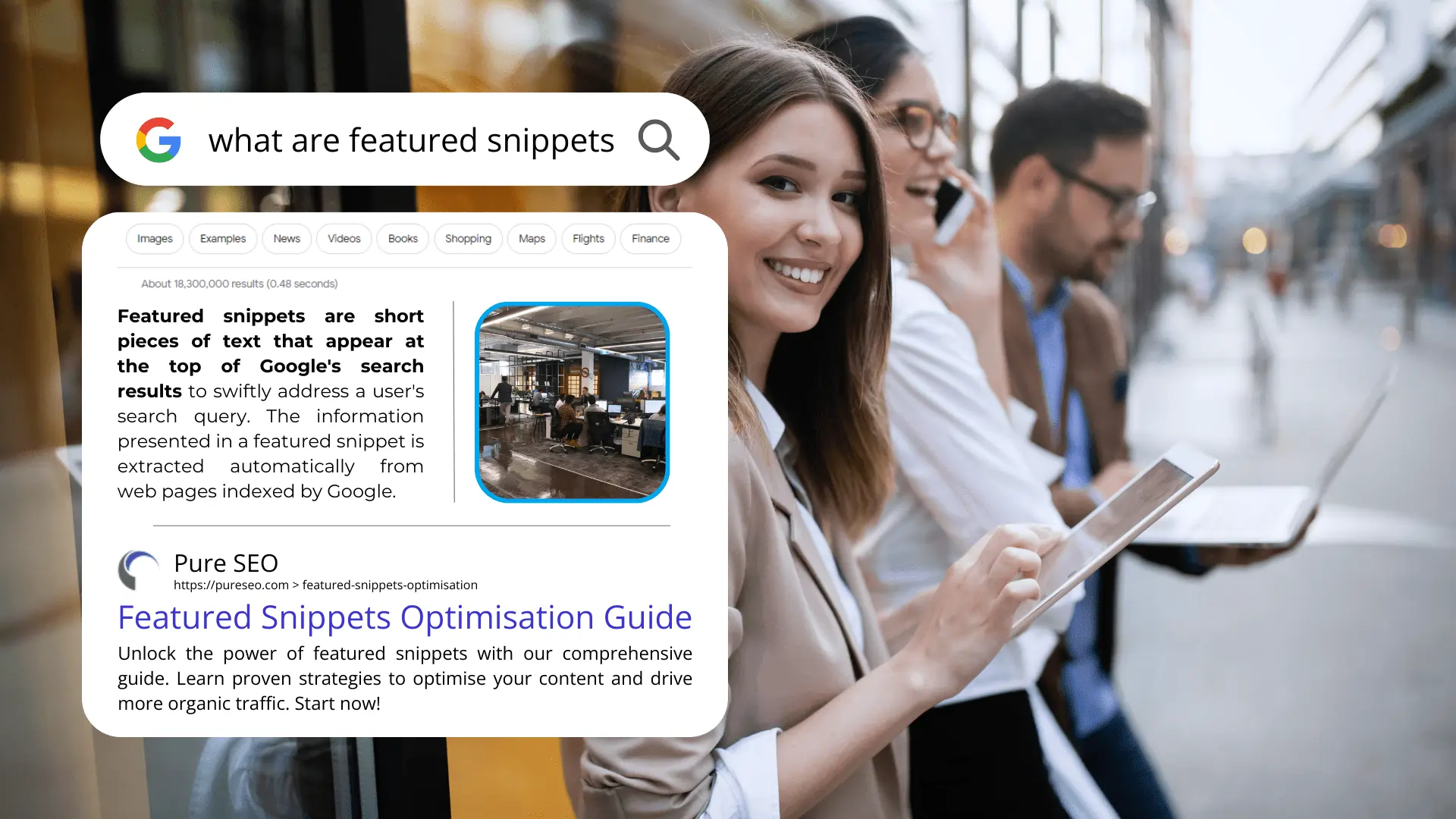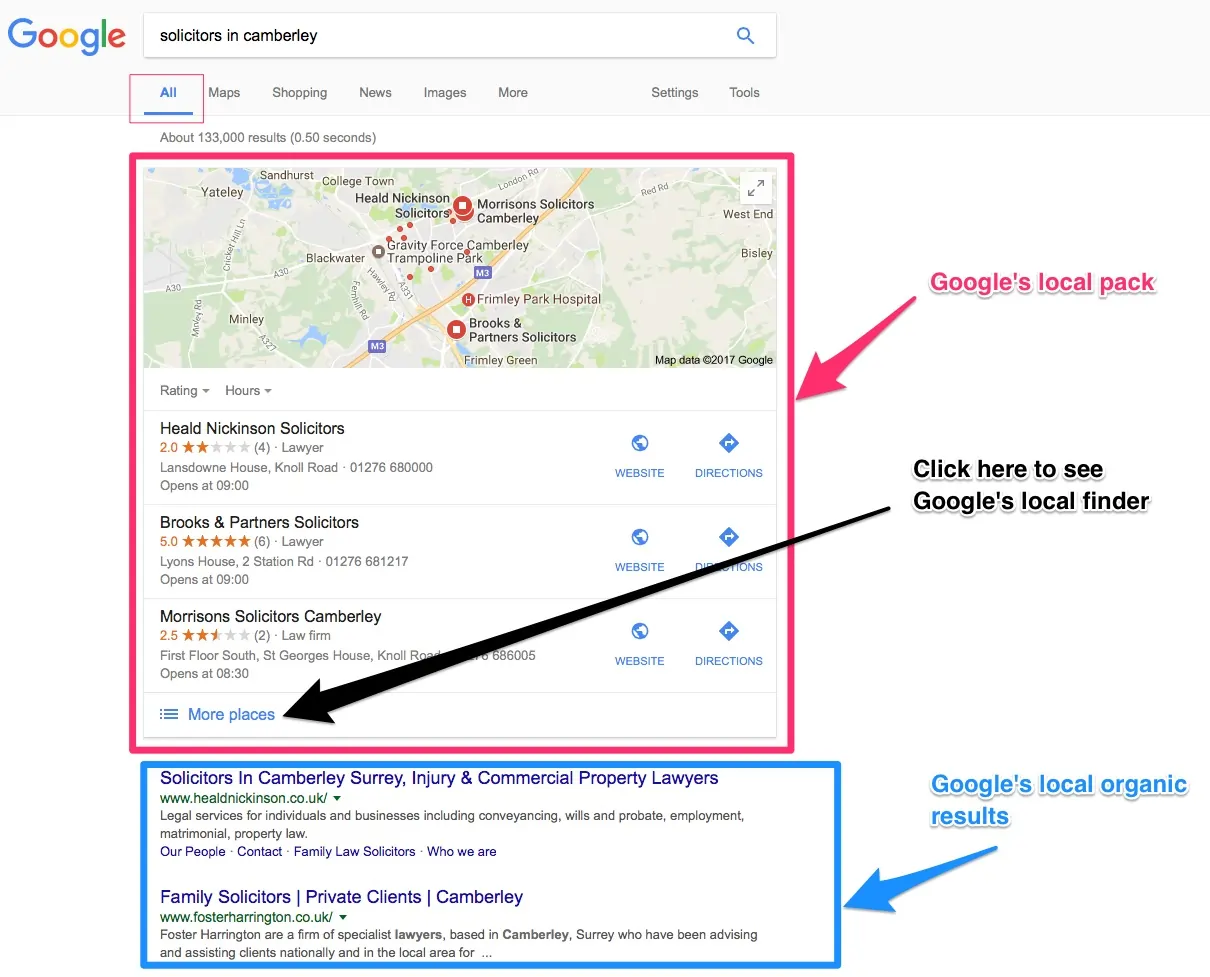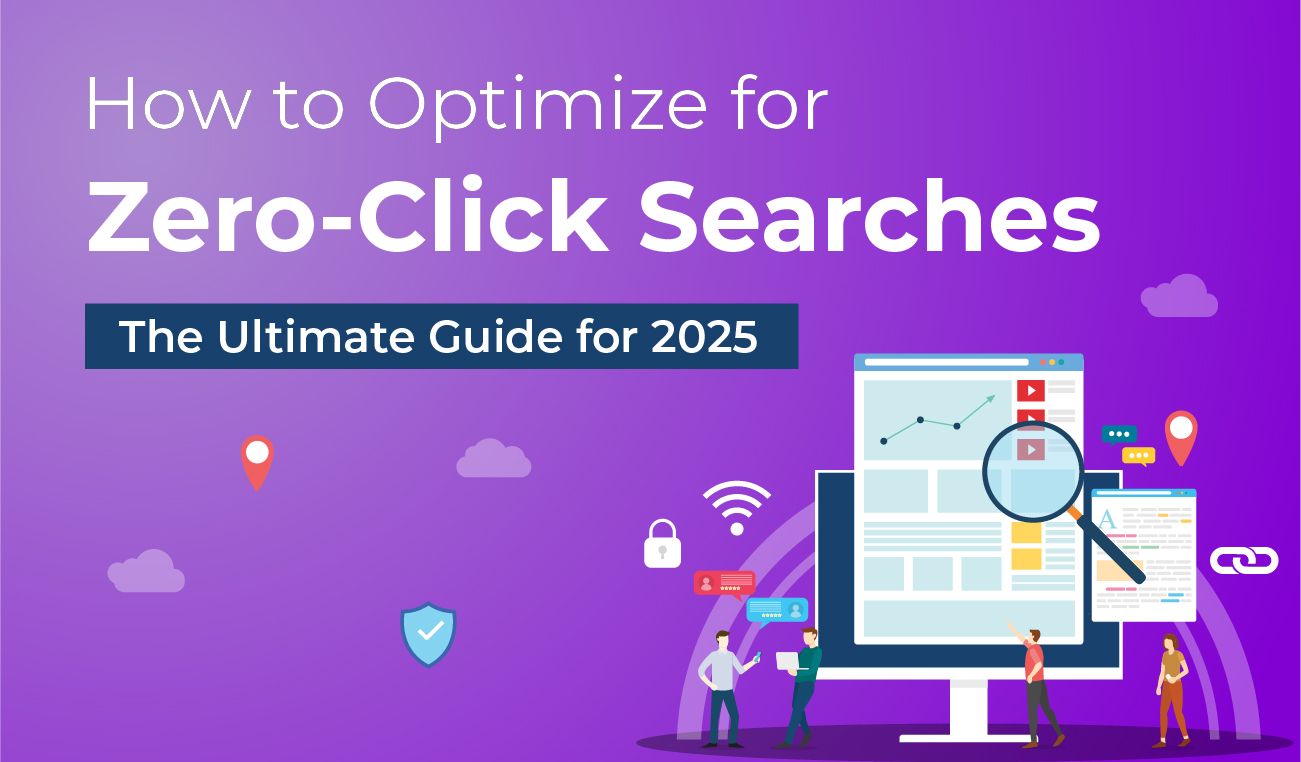The numbers are striking – 65% of global Google searches didn’t lead to a single click in 2024. Almost two-thirds of people find what they need without visiting any website.
These “zero-click searches” happen when users get their answers right on Google’s results page. The numbers tell an interesting story. Starting at 54.11% in 2017, zero-click searches have grown steadily. Mobile users show an even more dramatic trend – 77.2% of mobile searches now end without clicks.
People’s interaction with search engines has seen a fundamental change. Quick answers through featured snippets, knowledge panels, and other SERP features drive this trend. AI-powered search features will likely push these numbers even higher in 2025.
Website owners and marketers might find these statistics concerning. The situation offers a unique chance to stand out. Zero-click searches can actually help boost your brand’s visibility. Your authority can grow stronger than traditional click-through traffic might allow.
This piece will guide you through adapting your SEO strategy to thrive in the zero-click era. You’ll learn ways to benefit from these evolving search patterns in 2025 and beyond.
What Are Zero-Click Searches? Key Characteristics and Trends

Image Source: Scalenut
Zero-click searches show a transformation in how people use search engines. Traditional searches lead users to click on websites, but zero-click searches give answers right on the search engine results page (SERP). Users don’t need to visit any website to get their information.
Define zero click search and how it works
Google and other search engines display answers to user questions at the top of the SERP. This creates a zero-click search that meets the user’s needs without additional clicks. Search engines aim to give immediate answers and boost user experience, making these searches more common.
Smart algorithms extract and show relevant information from indexed web pages. Search engines check if they can provide a direct answer when you type a question. They pull information from trusted sources and display it prominently on the results page through various SERP features.
To cite an instance, searching “how many kilometers in 1 mile” brings up a conversion calculator at the top. The same happens when you look up a celebrity’s age or a movie’s cast – you get instant answers without visiting another website.
Examples of zero click search results
Zero-click searches appear through several SERP features that each give specific types of information:
- Featured snippets: Short summaries at the top of search results that answer user questions. You’ll see these for “how-to” queries and “who,” “why,” or “what” questions.
- Knowledge panels: Information boxes on the right side of search results about people, places, organizations, or things. Brand/personal knowledge panels and local knowledge panels are the two main types.
- Direct answer boxes: Quick answers to simple, factual questions without external site links.
- People Also Ask (PAA): Question boxes you can expand to explore related topics without leaving the SERP.
- Local packs: Maps showing nearby businesses with hours, addresses, and ratings.
- AI Overviews: These new 2024 features combine multiple sources into brief explanations at the top of search results.
Math answers, dictionary boxes for words, and carousel snippets that let you swipe through related answers round out the common features.
Trends from 2024 and what to expect in 2025
Zero-click searches have grown by a lot over the last several years. During 2024, about 65% of global Google searches ended without clicks. Mobile searches showed even higher numbers at over 75%. This jump is substantial compared to two years ago when only 26% of searches had no clicks.
American users demonstrated this trend clearly – 60% of their searches in 2024 had zero clicks. Users find more value in SERP information than ever before.
The digital world shows these key patterns:
- The rise of AI Overviews: These features spread faster since their May 2024 launch. About 80% of keywords with overviews come from information searches.
- Increased video presence: Videos showed up in about 71% of search results early in 2024. That’s up from 56% just three months before – a 15% jump in one quarter.
- Mobile dominance: Small screens make direct answers especially useful, leading to more zero-click searches on phones.
Experts see the zero-click trend growing into 2025. Search engines will combine AI and machine learning to create better direct answers and more SERP features.
Some worry about website traffic dropping, but zero-click searches create opportunities for businesses. Companies can boost their visibility through knowledge panels and featured snippets. They build trust by providing expert information in search results and attract local customers through location-based features. Success comes from adapting strategies to stand out in zero-click features while keeping conversion paths open.
Why Zero-Click Searches Matter for SEO and Marketing
Search engines now put user experience first, which has completely changed how we measure SEO success. Zero-click searches bring new challenges and opportunities. Marketers must adapt to succeed in this new digital world.
Impact on organic traffic and CTR
Zero-click searches have changed organic traffic patterns drastically. Recent studies show organic click-through rates (CTR) have dropped between 0.64% and 1.41%. Users now find answers without visiting websites, which relates directly to fewer clicks.
SEO professionals need a new strategy to measure success beyond site traffic. Different sectors show varied effects:
- B2B companies see AI search mostly in early research phases
- Retail and travel industries face zero-click queries throughout the buyer’s path
- News sites lose visitors as Google shows headlines in search
- Ecommerce brands now face AI-generated product summaries
- Health and finance sites see Google preferring 10-year old sources over independent ones
Almost 65% of global Google searches in 2024 didn’t get any clicks. Mobile searches show even higher rates above 75%. Traditional organic traffic metrics alone can’t show marketing success anymore.
Brand visibility vs. website visits
Zero-click searches cut direct site traffic but open doors for brand exposure. Smart marketers now look beyond traffic numbers to measure overall visibility.
Your brand gains valuable exposure when content appears in featured snippets, knowledge panels, or AI Overviews. This visibility boosts brand awareness and shows your business as an authority.
Zero-click features offer clear benefits:
Users see your brand name right in search results. Regular appearances in top positions build trust. This visibility often brings traffic later as people remember your brand.
Bain’s research shows 80% of consumers use zero-click results for at least 40% of their searches. Your content still reaches people, just differently than before.
Opportunities for authority building
Zero-click searches help build brand authority naturally. Google’s selection of your content for featured snippets shows users they can trust your brand.
Businesses that show up often in zero-click results see:
- More trust from potential customers who link your brand with quality information
- Better conversion rates from site visitors who already know your expertise
- Stronger industry recognition as an authority
More users now search for Reddit content on Google. This shows people want real, honest information. Brands can use this trend by creating genuine content that works well in zero-click displays.
Zero-click searches might seem scary for traditional SEO, but they offer new ways to reach audiences. Successful businesses focus on becoming trusted experts rather than just getting clicks.
Smart optimization for search features keeps your brand visible and builds lasting impressions beyond website numbers. Success comes from accepting visibility and authority matter more than site visits in today’s quick-answer world.
The Anatomy of Zero-Click Searches: Key Features to Understand

Image Source: Scrum Digital
Zero-click search results are the building blocks you need to understand for any SEO strategy in 2025. These specialized SERP features now appear in nearly two-thirds of all Google searches. They give instant answers without making users click through to websites.
Featured snippets
Featured snippets sit at the coveted “Position Zero” above traditional organic listings. Google automatically extracts these highlighted excerpts from web pages to answer user queries right on the SERP.
The data shows featured snippets get about 8% of all clicks. This makes them valuable digital real estate even though they contribute to zero-click searches. Definition-style snippets usually run between 40-60 words. You’ll see them most often with long-tail keywords.
These four types of featured snippets dominate search results:
- Definition/paragraph boxes: Brief text blocks providing direct answers or explanations
- Ordered lists: Step-by-step instructions or ranked items in specific sequence
- Unordered lists: Bulleted information without particular ordering
- Table snippets: Structured data presented in tabular format
Question-based queries typically trigger featured snippets. They answer “how-to,” “what is,” and other informational searches without needing more exploration.
Knowledge panels
Knowledge panels show detailed information boxes on the right side of desktop search results. These panels tap into Google’s Knowledge Graph. They work like digital “business cards” for entities including people, places, organizations, and concepts.
Knowledge panels differ from featured snippets. Instead of pulling content from one website, they gather information from trusted sources like Wikipedia, Wikidata, and other authoritative databases. Each panel includes entity information, relevant images, social profiles, and related resources .
Brand searches or public figure queries often lead to zero-click searches because knowledge panels offer detailed entity overviews that satisfy informational needs.
People Also Ask (PAA)
PAA features show expandable question boxes right below the featured snippet in many searches. Users can click these interactive elements to see brief answers and get more question suggestions.
Local intent searches show PAA boxes 40-60% of the time. This creates an engaging experience that keeps users in Google’s ecosystem. Each expanded box shows website content with attribution links.
Users can explore multiple related topics without visiting individual websites. This interactive nature of PAA boxes leads to more zero-click behavior as people get detailed information directly in search results.
Local packs and map results
Queries with geographical intent bring up local packs (or “map packs”). These prominent features combine an interactive map with three top business listings that match the search.
Local pack listings show key business details:
- Business name and address
- Operating hours
- Customer ratings
- Click-to-call options for mobile users
- Interactive maps for directions
Users often don’t need to visit business websites because these displays give them contact details, directions, and reviews right there.
AI overviews and direct answers
AI Overviews are Google’s newest zero-click feature. They show up in about 30% of the 10,000 most searched keywords [13]. Google’s AI creates these summaries by combining information from multiple sources into clear explanations at the top of search results.
AI Overviews take up around 820 pixels in height and link to 5.4 external sources on average. Problem-solving queries (74%) and question-based searches (69%) commonly trigger these overviews.
Direct answer boxes work differently. They give quick responses to simple questions without external links. If you ask “What is the capital of France?” you’ll get your answer right there, no clicks needed.
These zero-click features create opportunities for brands even though they might reduce website traffic. Your visibility and authority grow when you appear in these prominent positions. Google shows it trusts your expertise when it cites you in AI Overviews or features you in knowledge panels. This builds credibility with potential customers.
The Role of Google’s Search Intent in Driving Zero-Click Queries
Google’s sophisticated understanding of search intent powers zero-click searches. These searches provide answers right on the results page without users clicking any links. The data from 2024 shows over half of Google searches resulted in zero clicks. This represents a fundamental change in SEO approaches.
How Google interprets user intent
Google has evolved beyond simple keyword matching into an intent-interpreting engine. The search engine examines query structure, word choice, and search history to understand user needs. AI Overviews and other SERP features deliver zero-click experiences through this process.
Google’s AI Overview (or Search Generative Experience) focuses on informational queries. The system displays summaries when its “systems determine that generative responses can be especially helpful”. Questions about everyday situations often generate these zero-click experiences.
Users write about 23 words in an average ChatGPT prompt. Google searches average just 4.2 words. This difference explains how intent recognition has become more sophisticated. Google now understands complex intent behind short queries.
Why intent matters more than keywords
The year 2024 brought a fundamental change that made understanding intent vital. Google now solves user problems immediately instead of just matching keywords.
Studies reveal that 80% of keywords triggering AI Overviews are informational. Transactional and commercial queries split the remaining 20%. This pattern shows how intent classification determines zero-click treatment for queries.
Google prefers to display direct answers for factual queries. Searches about simple facts, weather updates, time conversions, and mathematical formulas often lead to zero-click results.
Content that lines up with the full context behind queries works better than traditional keyword optimization. Websites that understand and address specific user intents have better chances of securing prominent positions.
Types of queries that trigger zero-click results
Zero-click experiences consistently come from specific query types:
- Question-based queries: Searches starting with “what,” “how,” “why,” and “who” often trigger featured snippets or AI Overviews. “What is the capital of France?” or “How do I fix a leaky faucet?” usually get direct answers.
- Factual and definitional searches: Simple fact-checking queries like conversions or definitions rarely need clicks.
- Local intent queries: Searches with location information show complete details in local packs, making further clicks unnecessary.
- Basic informational queries: Quick-answer general knowledge questions.
Research from 2024 shows informational intent makes up about 80% of AI Overview appearances. Combined with 60% of U.S. searches ending without clicks, intent clearly shapes this behavior.
Zero-click searches offer opportunities rather than threats. Your brand gains visibility when content appears in these prominent positions. Like billboards build awareness without immediate action, zero-click features can establish your brand’s authority. This leads to stronger recognition and trust in your expertise.
How Zero-Click Searches Affect Traditional SEO Metrics
Traditional SEO metrics are changing because zero-click searches continue to grow. Users now get answers right from search results without visiting websites. This trend has evolved from a small beginning to become a major force that makes SEO professionals rethink their success metrics.
Decline in CTR and traffic
The numbers reveal how zero-click searches are changing the digital world. Google searches in 2024 show that users didn’t click through on 65% of results. Mobile searches paint an even clearer picture with rates above 75%. This change in user behavior affects website performance directly.
Studies show organic click-through rates have dropped between 0.64% and 1.41%. Websites in every industry see less traffic. Bain’s research shows organic web traffic has dropped by 15% to 25%.
Different sectors feel this change differently. B2B companies see zero-click effects mostly in early research queries. Retail and service businesses see it at every customer touchpoint. Brands that once depended on organic traffic must now adapt their plans and goals.
New focus on impressions and visibility
The digital world’s changes mean SEO professionals need to track search impressions and visibility rather than just traffic. Smart marketers in 2025 keep an eye on:
- Impression share on key queries
- Featured snippet appearances
- People Also Ask (PAA) inclusions
- Brand mentions in AI Overviews
- Knowledge panel visibility
This method shows that brand exposure through zero-click features adds value even without website visits. Digital marketers now know that visibility creates familiarity and familiarity builds trust.
One industry expert says, “The trick is to move your SEO strategy to value impressions and visibility, not just traffic volume”. Companies that track their visibility better understand their digital presence and influence.
Why engagement metrics matter more now
Lower click-through rates mean the quality of engagement from your traffic matters more. The metrics that show deeper interaction with your content are now key indicators of SEO success.
Marketers should watch:
- Time on site and scroll depth, which show content quality
- Bounce rate improvements that reveal visitor satisfaction
- Brand search volume growth that shows rising awareness
- Social shares and community interactions
These engagement signals help you know if your content appeals to visitors and can make up for less traffic. High engagement often leads to better conversion rates when users visit your site.
Zero-click searches bring challenges but open new doors too. Traffic numbers might drop, but brands that welcome visibility and focus on quality engagement can use these changes to build authority and trust. Zero-click searches are not a threat – they’re a new way to connect with audiences and show expertise beyond simple clicks.
Strategies for Optimizing Content for Zero-Click Searches
Zero-click searches aren’t just good for business—they’re profitable. These searches happen when Google shows answers right in the search results, so users don’t need to visit websites. The digital world changed significantly when browser-based searches first led to zero clicks in June 2019. Now, becoming skilled at handling these searches is vital for online success.
Use of structured content formats
Google loves well-laid-out content that answers what users ask. Here’s how you can make your content work better:
- Break down information into easy-to-read chunks with paragraphs, lists, tables, steps, definitions, and comparisons
- Put your best information at the start of content sections to boost your chances of getting featured snippets
- Create a logical flow with proper headings and subheadings that help search engines grasp your content structure
Your main goal should be to make information easy for users and search engines to find and show. This approach improves readability and matches what search engines want for zero-click features.
Answering questions clearly and early
The foundation of zero-click optimization lies in content that answers user questions directly:
Start by finding out what questions your audience asks about your topic. You should target question-type searches by naturally including relevant keywords in your copy. Brief, clear answers to specific questions should appear at the start of your content.
Adding an FAQ section to your website could help you get multiple snippets from one page. This strategy works—one team saw their organic applications soar by 190% through Featured Snippets after they tried these approaches.
Using schema markup effectively
Schema markup (structured data) helps search engines understand your content better:
The right schema markup boosts your chances of appearing in rich results. You’ll find many types available, but focus on what fits your content best, like FAQ schema for question-answer content and How-To schema for step-by-step guides.
Before you launch, test your schema with Google’s Rich Results Test tool for single pages. The “Markup” section in Site Audit works well to test your entire site.
Today’s search environment needs a fresh perspective on zero-click searches—they’re opportunities, not threats. Half of all searches still bring traffic, while zero-click results build brand visibility and trust. These optimization strategies can turn seeming traffic losses into valuable brand exposure and authority.
Leveraging Featured Snippets: Best Practices for Optimization

Image Source: Pure SEO
Featured snippets are the crown jewels of zero-click search real estate. These highlighted answer boxes show up at position zero—above traditional organic listings. Users get immediate answers without visiting websites.
Targeting question-based keywords
Google loves to display featured snippets for question-based keywords. You can find these opportunities by studying existing snippets in your niche and learning which formats Google prefers. Long-tail keywords work best here, as data shows featured snippets appear more often for specific queries. Tools like AnswerThePublic help visualize real user questions about your topic. Google’s “People Also Ask” boxes are great for finding more question-based targets.
These queries pack a powerful punch – over 40% of voice search results come from featured snippets. “How-to” searches deserve special attention since they’ve grown by more than 140% recently.
Using lists, tables, and definitions
Match your content format to the snippet type you want:
- Paragraph snippets: Create tight definitions (40-50 words) that answer “what” and “why” questions directly
- List snippets: Perfect for step-by-step guides – use ordered lists for processes and unordered lists for item collections
- Table snippets: Work best for comparisons, pricing details, or structured data
Google prefers to pull complete tables rather than piece together scattered information. Clean, simple tables with clear headings boost your chances of winning table snippets.
Formatting for snippet eligibility
The right HTML structure tells Google your content deserves snippets. Use heading tags (H1, H2, H3) to organize your content clearly. List snippets need proper HTML markup for each item.
Schema markup plays a crucial role – especially FAQ schema for Q&A content and HowTo schema for tutorials. Test everything with Google’s Rich Results Test tool before going live.
Featured snippet optimization gives you a competitive edge. Even with zero-click searches, you build brand visibility and become an authority in your field.
Local SEO and Zero-Click Searches: Winning in the Local Pack

Image Source: AdJuice® SEO Services
The local pack is one of the most valuable zero-click search features for businesses with physical locations. Users who search for local services see this prominent display that shows a map and business listings without needing to visit websites.
Optimizing Google Business Profile
Google Business Profile (formerly GMB) is the life-blood of local pack success. Your chances of appearing in these prominent positions go up by a lot with a complete profile. Make sure your business name, address, and phone number match exactly on all online platforms. Pick specific categories instead of general ones – to cite an instance, choose “Italian Restaurant” rather than just “Restaurant”.
Quality images of your storefront, products, and team members help build trust with potential customers. Your business stays active in Google’s eyes through regular GMB posts about updates, promotions, and events.
Using local keywords and schema
Your website should include location-specific search terms that match how people actually search. Titles, meta descriptions, and headers work well with phrases like “best pizza in Denver” or “affordable vet clinic Miami” – just don’t overdo it to keep things natural.
LocalBusiness schema markup helps Google better understand your content and boosts your local pack visibility. Your NAP information, operating hours, and service details should be part of the implementation. Star ratings can show up in search results when you add Review schema, which makes your listing pop even without clicks.
Encouraging reviews and NAP consistency
Reviews play a huge role in local pack rankings and shape customer trust levels. BrightLocal’s research shows that businesses with 10 or more recent reviews have better chances at local pack ranking. Quick, personal responses to every review – both good and bad – work better than automated-sounding replies.
Search engines trust businesses more when their NAP stays consistent across platforms. Different details confuse potential customers and hurt your local search rankings. Many businesses make use of citation management tools to track and keep their business information consistent.
Local businesses can boost their visibility and attract more foot traffic through zero-click searches, even though these might seem concerning at first.
Conclusion
Embracing the Zero-Click Future: Moving Beyond Traditional Traffic Metrics
Zero-click searches happen when users find answers right on Google’s search results page without visiting websites. These searches made up 65% of all Google queries in 2024. This has completely changed how we approach SEO and content creation. Many see this as a threat that steals traffic. The reality? It’s actually a great chance to boost your brand visibility and authority.
Search has come a long way since website visits were the only success metric. Featured snippets, knowledge panels, AI Overviews, and local packs now give instant answers while showing off your brand to potential customers. So success now means tracking impressions, featured snippet appearances, and knowledge panel inclusions – not just clicks.
You’ll need several key approaches to tap into the full potential of zero-click features. Start with clear headings, short definitions, and well-organized lists that search engines can easily grab. Put answers to common questions early in your content to boost your chances of getting snippets. Use proper schema markup to help Google display your information better.
Local businesses should focus on their Google Business Profile. They need consistent NAP and good review management to stand out in local packs. These steps build visibility even without website clicks.
Zero-click searches offer huge potential for brands ready to adapt. Your traditional traffic numbers might drop, but showing up in SERP features builds brand recognition. It shows authority to potential customers. This creates multiple ways to connect with your audience and encourages deeper engagement when they visit your site.
We should look beyond website traffic as the only sign of success. Brand visibility across the search ecosystem builds lasting connections with audiences. Zero-click searches don’t remove your brand from the picture – they just create new ways for users to interact with your content.
Looking ahead to 2025, create content that helps users whatever their clicking habits. Brands that welcome this new reality will thrive by optimizing for the complete search experience, not just traffic.
FAQs
Q1. What are the best strategies to optimize for zero-click searches?
To optimize for zero-click searches, focus on creating concise, structured content that directly answers user queries. Use clear headings, lists, and tables to make information easily extractable. Implement schema markup, optimize for featured snippets, and ensure your Google Business Profile is complete and accurate for local searches.
Q2. How can businesses measure the impact of zero-click searches?
Businesses can measure zero-click search impact by tracking impressions, featured snippet appearances, and knowledge panel inclusions using tools like Google Search Console. Additionally, monitor brand search volume growth and engagement metrics such as time on site and bounce rate to gage the effectiveness of your zero-click optimization efforts.
Q3. What role does content structure play in zero-click optimization?
Content structure is crucial for zero-click optimization. Use proper HTML formatting with clear headings (H1, H2, H3) to define your content hierarchy. Organize information into easily digestible formats like paragraphs, lists, and tables. Place the most relevant information early in your content to increase the chances of being featured in zero-click results.
Q4. How important are local SEO tactics for zero-click searches?
Local SEO tactics are extremely important for zero-click searches, especially for businesses with physical locations. Optimize your Google Business Profile, maintain consistent NAP (Name, Address, Phone) information across all platforms, and encourage customer reviews. These efforts can help your business appear in local packs and knowledge panels, increasing visibility without requiring clicks.
Q5. Can zero-click searches actually benefit a brand’s visibility?
Yes, zero-click searches can significantly benefit a brand’s visibility. While they may not result in direct website traffic, appearing in featured snippets, knowledge panels, or local packs increases brand exposure and establishes authority. This visibility can lead to increased brand recognition, trust, and eventual engagement when users do need more in-depth information or services.
References and Further Reading
https://www.outreachbrands.com/zero-click-searches-and-local-seo-winning-the-map-pack/
https://xponent21.com/insights/ai-overviews-now-dominate-search-results-why-your-seo-strategy-needs-a-major-upgrade/
https://louispretorius.com/seo/keyword-research/question-based-searches-featured-snippets/
https://www.bain.com/insights/goodbye-clicks-hello-ai-zero-click-search-redefines-marketing/
https://www.wordstream.com/blog/zero-click-searches
https://searchengineland.com/strategic-ppc-moves-to-offset-traffic-loss-from-zero-click-search-455122
https://backlinko.com/hub/seo/featured-snippets
https://www.semrush.com/blog/featured-snippets/
https://bostoninstituteofanalytics.org/blog/5-strategies-to-adapt-to-zero-click-searches-in-seo/
https://www.linkedin.com/pulse/zero-click-searches-how-still-win-traffic-2025-kamatham-premaswini-ep3ec
https://www.itorixinfotech.com/the-importance-of-nap-in-local-seo-why-consistency-matters-for-your-business/
https://www.designrush.com/agency/search-engine-optimization/trends/zero-click-searches
https://www.searchenginejournal.com/google-ai-overviews-found-in-74-of-problem-solving-queries/538504/
https://digitalguider.com/blog/what-are-zero-click-searches/
https://www.invoca.com/blog/zero-click-search-isnt-the-end-of-seo-its-a-new-beginning
https://seo.ai/blog/zero-click-searches
https://www.workshopdigital.com/blog/rise-in-zero-click-searches-deep-dive/
https://www.semrush.com/blog/zero-click-searches/
https://zerogravitymarketing.com/blog/how-to-optimize-for-zero-click-searches/
https://support.similarweb.com/hc/en-us/articles/360006488277-Zero-Click-Searches
https://impact.com/news/creating-effective-zero-click-content-to-boost-your-brands-visibility/
https://www.theedigital.com/blog/what-are-zero-click-searches
https://biziq.com/blog/how-to-optimize-for-zero-click-searches/
https://www.sitelint.com/blog/understanding-googles-featured-snippets
https://www.markteer.com/blog/how-to-optimize-measure-for-zero-click-searches-in-2025/
About The Author
Get A Free 1 Hour Consultation
I can help you fix your digital marketing strategy that powers your business growth.
No strings attached. No commitments required. No sales pitch from my side about our services. I will give you a patient hearing, understand your business, understand your business growth challenge and suggest various growth strategies you can implement for your business. I will talk about my service offerings, only if you want me to. Not otherwise.


